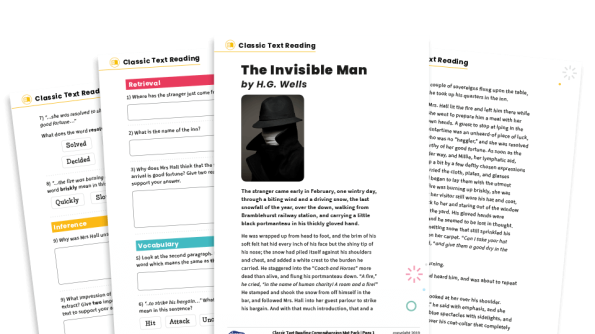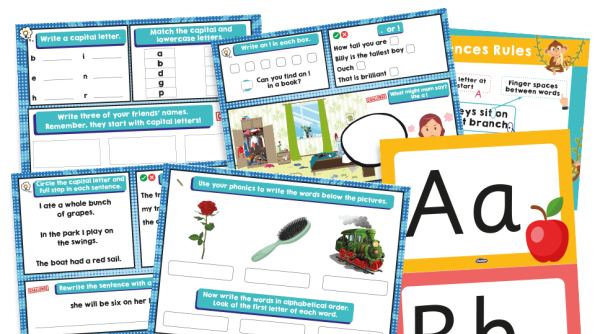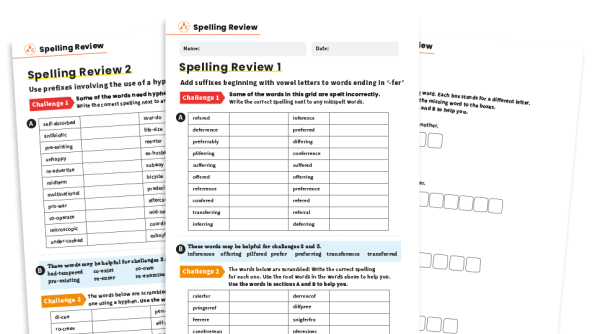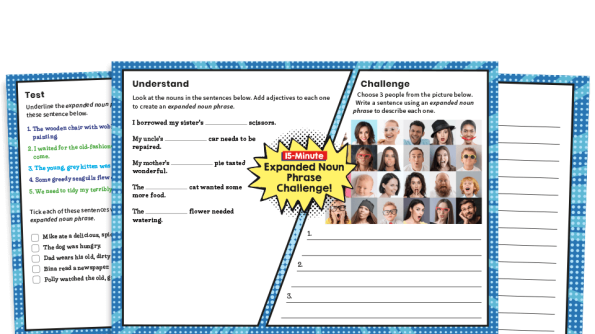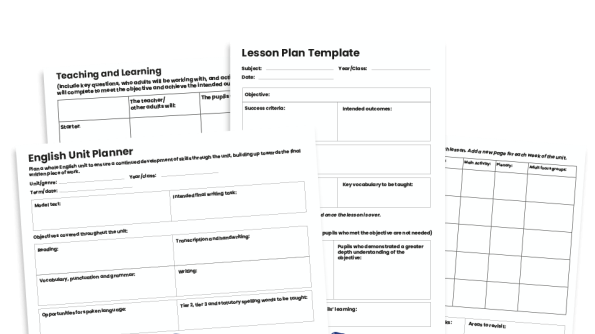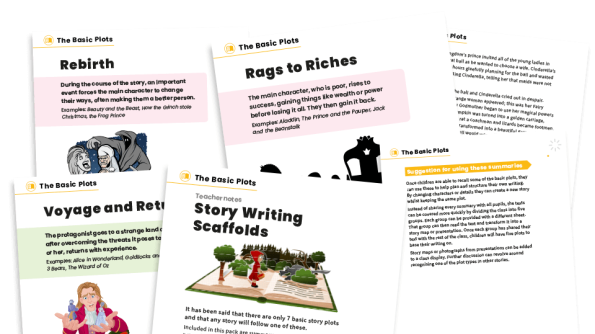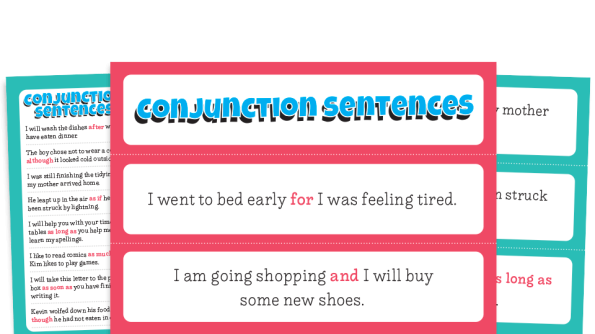How to teach coordinating conjunctions in Key Stage 2: FANBOYS
Understanding what makes a good compound sentence is an essential skill to help young writers make progress

If you’ve ever heard a young child talk about almost anything, you probably know that using certain types of conjunctions is something that comes naturally after they start talking. “I went to school and played with my friends and wrote some things down.” And so on.
The issue, then, with teaching the use of coordinating conjunctions, as required by the National Curriculum, is not whether they can do it but how well they do it. Even if you are already familiar with FANBOYS (outside of Star Trek fanatics or Star Wars fans), here are some tips to ensure rave reviews for your teaching of coordinating conjunctions.
1
|
FANBOYS acronym – understand the basics
It is important for you as a teacher to ensure that your input is backed by sound subject knowledge so let’s just make sure we agree on the basics. There are three types of sentences: simple, compound and complex.
- Simple sentences (independent clauses) involve one subject (noun or pronoun) ‘doing’ the verb.
- A complex sentence features a main clause being supported by the addition of one or more dependent clauses or subordinating clauses, joined with a subordinating conjunction.
- A compound sentence contains two or more independent clauses linked by coordinating conjunctions.
2
|
Compound sentences
By independent clauses, we mean clauses that could stand on their own as simple sentences. By joining them with a coordinating conjunction, we are indicating to the reader that they are linked.
For example, I had an ice lolly but Jess had a drink. This could have been written as two different sentences - or independent clauses - (I had an ice lolly. Jess had a drink.) but combining them into a compound sentences suggests that the two events were connected, possibly through the same journey to a shop.
3
|
What are the FANBOYS coordinating conjunctions?
The most important seven coordinating conjunctions to remember are and, so, but, or, for, nor and yet (although we tend to focus on just and, but and so in Year 2) The best way to remember them is with the mnemonic FANBOYS.
What does the acronym FANBOYS stand for? It stands for for, and, nor, but, or, yet and so.
It’s worth reminding children, by the way, that they can easily identify subordinating conjunctions, simply by checking they don’t appear in the FANBOYS acronym. This can be a really handy tip for completing activity sheets and SATs style questions.
We offer a display pack of interactive resources featuring a separate poster for each of these co-ordinating conjunctions giving useful examples around an entertaining image. If you arrange these in the right order, there really will be no excuse for pupils not remembering what FANBOYS means!
4
|
Combining independent clauses with a FANBOYS coordinating conjunction
Once they know what the co-ordinating conjunctions are, see whether they can put that knowledge into practice. For example, why not challenge them to write a decent complete sentence, with joined independent clauses, for each of the FANBOYS? If in doubt, they could refer to our KS2 model sentences pack for conjunctions to help them get some inspiration of their own.
5
|
FANBOYS grammar – sharing the subject
Perhaps as a side note, make sure your pupils know that when the two independent clauses share the same subject, there is no need to repeat it. For example, consider these two sentences: Mum got into the car. Mum drove to work. When combining these into a compound sentence using the conjunction and, it is a good idea to drop the second Mum: Mum got into the car and drove to work. Challenge them to think of an example of their own, perhaps using a different coordinating conjunction.
6
|
FANBOYS conjunctions ‘for’, ‘or’ and ‘nor’
Of the FANBOYS, for, or and nor could arguably be the most problematic. In truth, for can sound rather archaic: If you please, Mr Darcy, fetch me a chair, for I have come over all unnecessary! These days, because is often used in its place, which would make it a complex sentence. If in doubt, your pupils might want to just use for as a preposition.
Or and nor can be confused but the main thing to remember is that nor is used to indicate negative possibilities whereas or is more positive. Nor is typically used in partnership with neither, as correlative conjunctions. For example, The train was neither clean nor on time when it finally arrived. Other examples of correlative conjunctions include not only/but also and whether/or.
7
|
Coordinating conjunction English grammar practice
Give your pupils plenty of opportunity to practise combining independent clauses - simple sentences - to make compound sentences in different ways, encouraging their writing flow. Our KS2 conjunctions sentence maker cards could help you here - and for Year 2 children, who only really need to get to grips with ‘and’, ‘but’ and ‘or’, why not try our SPaG Challenge Mat?
8
|
Make coordinating conjunctions a requirement
As well as giving resources to exercise children’s understanding of coordinating conjunctions, make sure they know to include it when they are completing a piece of writing. To focus minds still further, make compound sentences one of the success criteria, either by encouraging pupils to find examples within their work at the editing stage or including them on any self-assessment checklist.
9
|
Develop critical FANBOY friends
As was suggested earlier, it is often the skill with which coordination is applied rather than the mere presence of the relevant types of conjunctions that really demonstrates an understanding of this topic. Encourage pupils to share their work with a partner with the specific intention of finding and assessing any compound sentences critically. In particular, ask them to judge whether a variety of coordinating conjunctions has been used. Also, get them to check if the most appropriate conjunction word has been used for the context. You’ll be amazed by how constructively honest children can be!
We hope this has been helpful and useful but not too intimidating. Don’t forget to use our resources so you don’t have to make them yourself. Oh, and if you can live with the repeated use of ‘remember them FANBOYS’ (“which determiner do we really need, children?”) this extremely catchy song could certainly help FANBOYS to stick!
You may also be interested in...
> Year 1 and Year 2 Common exception words – How to make them stick
Latest Stories

Year 1 and Year 2 Common exception words – How to…

Imperative verb – 10 ways to teach bossy verbs
All Stories
Save hours of planning.
Get loads of benefits.
- Access 1,500+ resources
- Over 80 expert CPD guides
- New resources every week
- Full curriculum coverage
- Member-only
premium collections - Plus lots more...
Trending resources
Browse by Year Group
Year
1
Year
2
Year
3
Year
4
Year
5
Year
6

